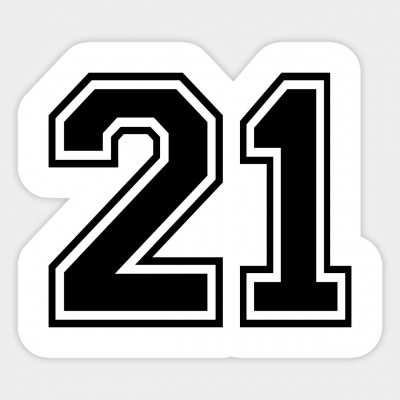Football News: A To Z: Kaizer Chiefs
Image from: freelargeimages.com
A To Z - Kaizer Chiefs
A is for Amakhosi
The club's nickname is Amakhosi, which means "Lords" or "Chiefs" in Zulu. The club was meant to move to a purpose built Amakhosi Stadium, which began planning in 2003 with a construction start date intended to be 2006. In 2010 the Kaizer Chiefs announced a redesign to lower costs. It is still not built now as I type in 2020!
B is for Big Boy
The club's founder, Kaizer Motaung, was known as 'Big Boy' in the USA. He gained the nickname after starring there, a first season as Rookie of the Year followed by a second year where he managed 16 goals in 16 matches (unsurprisingly becoming Atlanta Chiefs top scorer) saw him unanimously voted into the NASL All-Star Team.
C is for CAF
The Confederation of African Football (CAF) banned Kaizer Chiefs for 3 years from African club competitions and fined them $1500 after the reigning South African champions withdrew from the 2005 Confederation Cup. They were controversially eliminated from the African Champions League at the third round stage and dropped down to the Confederation Cup as a result. After being drawn against Egyptian side Ismaili they refused to play. They were also fined in 2002 by CAF after refusing to play a match in strife-torn Madagascar in the African Cup Winners' Cup, which they were defending.
D is for Doctor
Theophilus 'Doctor' Khumalo was a star midfielder for the Chiefs and the South African national team. Khumalo never played for another South African side, though he did have a spell in Argentina for Ferro Carril Oeste and in USA's Major League Soccer with Columbus Crew.
E is for Ellis Park
The Ellis Park Stadium disaster in 2001 was the worst sporting accident in South African history. The Soweto derby between Chiefs and their rivals Orlando Pirates was taking place in the 60,000 capacity stadium. Unfortunately as many as 30,000 more people were trying to force their way into ground to watch the match. Some reports suggested that as many as 120,000 people were admitted into the stadium and an equaliser by the Pirates led to a surge which spilled into the press boxes. It is reported that security guards fired tear gas into the crowds, which may have been the cause of some deaths, though South African police deny those reports. 43 people died in the crush, with an inquiry putting most of the blame at the feet of security guards that were bribed to admit fans without tickets into the stadium.
F is for Fair Play
In 2003 Kaizer Chiefs won the Fair Play award at the first ever Peace Cup in South Korea, a now defunct pre-season tournament. The competition is hosted, sponsored and organised by the Unification Church, better known as 'The Moonies' and was held every two years.
G is for Gary
Former Manchester United goalkeeper Gary Bailey returned South Africa to play for Kaizer Chiefs after finishing at United. Bailey, who was born in Ipswich, grew up in South Africa before paying his own fare to Manchester to have a trial with United. After establishing himself at United he went on to play twice for England before a serious knee injury at the 1986 World Cup ended his United career. He retired but came out of retirement to play for the Chiefs before finally giving up on his playing career in 1990.
H is for Home
It is joked in South Africa that the Chiefs do not play away games as they have such a large following around the country, every match is like a home game for them. Which is lucky for them as they have never managed to build their own home stadium.
I is for Indie
British britpop/indie band Kaizer Chiefs were named after the South African club due to it being where Leeds United had signed legendary defender Lucas Radebe from. The band members all supported Leeds.
J is for Johannesburg
They are based in Naturena in Johannesburg, the largest city in South Africa and one of the 50 biggest cities in the world. It is often known as the "city of gold" due to being established in 1886 after the discovery of gold on a farm. When the gold seam was discovered to be extremely large, it brought in tens of thousands looking to make their fortune.
K is for Kaizer
The club's chairman Kaizer Motaung is a former professional footballer, who played in the USA's NASL for Atlanta Chiefs. When he returned to South Africa in 1970, he decided to set up his own team and named it after himself and his former team. He later co-founded the South African Premier League (PSL) in 1996.
L is for Lewis
Eddie Lewis was one of the original Busby Babes, though he only managed 24 appearances for the Old Trafford side before moving to Preston North End in 1955. Lewis went on to become the Amakhosi's first English head coach and had three spells in charge of the team.
M is for Middendorp
Ernst Middendorp is their current manager (as I type anyway!). The German has managed many clubs in his career and is currently in his second spell in charge of the Chiefs, having also managed them between 2005 and 2007. In 2005 Arminia Bielefeld chose him as their 'Coach of the Century' as part of their centennial celebrations.
N is for Naturena
Their base is Naturena in Johannesburg, though they currently play their home matches at the FNB Stadium in Nasrec. The stadium is in Soccer City and was built for the 2010 FIFA World Cup, becoming the largest stadium in Africa with a capacity of 94,736.
O is for Oppenheimer
Sadly Chiefs' fans have suffered two major disasters, with the Oppenheimer Stadium disaster in 1991, sometimes known as the Orkney disaster, the second-worst sporting disaster in South African history. A pre-season friendly in the Oppenheimer Stadium in the city of Orkney, just over 100 miles from Johannesburg, ended in the death of 42 people. After over 30,000 were admitted into the 23,000 seater stadium and not segregated according to the team they supported as bitter rivals Chiefs faced Orlando Pirates, violence erupted after a goal was scored by the Chiefs. Pirates' fans threw cans and fruit at Chiefs' fans caused a stampede as panicking fans tried to escape the brawls and were crushed to death against riot-control fences.
P is for Pirates
The clubs bitterest rivals are another Sowetan side, Orlando Pirates. The club's founder Kaizer Motaung played for the Pirates during his early playing career.
Q is for Quinquagenary
The Kaizer Chiefs are celebrating their quinquagenary this year as they are 50 years old, having been created in 1970.
R is for Radebe
Legendary South African defender Lucas Radebe, who was so good for Leeds United that he spawned a British group named after him, is probably their most famous ever player. Radebe began his career with the Chiefs and played well enough to come to the attention of Leeds.
S is for Sevens
In October 2012 the Amakhosi announced that they had started a rugby sevens team to participate in the 7s Premier League.
T is for Tovey
South African international Neil Tovey holds the record for the most appearances for the club in a single season with 52 starts. He also holds the record for the most appearances in the South African National Soccer League with 634. 341 of them were made for Kaizer Chiefs.
U is for United States
Kaizer Motaung's time in the US led to the formation of the club. He initially returned to South Africa hoping to solve an internal dispute at former club Orlando Pirates, which had led to three players, Thomas 'Zero' Johnson, Ratha Mogoathleng and Edward 'Msomi' Khoza, being expelled. Motaung was unable to resolve the impasse and instead formed the Kaizer XI which played a number of friendlies. After a positive response from football fans, Motaung decided to form the Chiefs as a professionally run club that always paid players what they were promised on time, something that was almost unique in South African club football at the time.
V is for Vat Alles
The club's most successful season, 2001-02, was termed 'Operation Vat Alles' by their public relations officer. Vat alles is an Afrikaans term meaning 'take everything' as the team lifted 4 major trophies in just 4 months.
W is for White
Chiefs played through the Apartheid era in South Africa, becoming the first 'black' side to beat a 'white' team in the seventies. They beat 'white' side Hellenic 2-1 in the second leg of the Chevrolet Champions of Champions, admittedly after losing the first leg 4-0, but it was still an historic moment as the first time a white team in South Africa lost to a black team. They did also feature a number of white players by the time South Africa's first multiracial league began in 1978.
X is for Xyresic
Zambian striker Collins Mbesuma was particularly xyresic in the 2004/05 season as he scored a club record 35 goals in all competitions.
Y is for Yardstick
The Chiefs are the yardstick by which the rest of the South African teams are now measured as the most successful club in the country. They claim to have 93 trophies and were the 2001 African team of the year.
Z is for Zulu
It is not just their nickname that is Zulu, it is also the surname of one of their midfielders, Philani Zulu. He signed for them in 2017.
To read the previous A To Z: Paris Saint-Germain click here.
Written by Tris Burke April 24 2020 13:47:11
Discuss rumours and transfers on our Manchester United rumours web page
Discuss rumours and transfers on our Leeds United rumours web page


